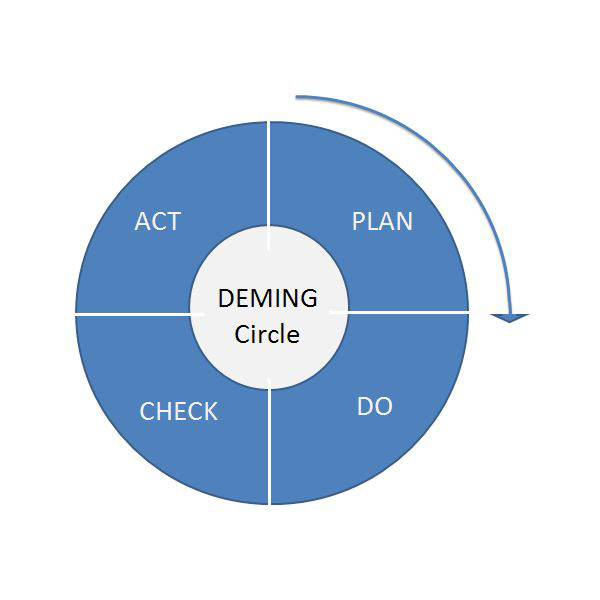Quality Improvement -- Continuous Improvement
The term quality management has a specific meaning within many business sectors. This specific definition, which does not aim to assure 'good quality' by the more general definition, but rather to ensure that an organization or product is consistent, can be considered to have four main components: quality planning, quality control, quality assurance and quality improvement.[1] Quality management is focused not only on product/service quality, but also the means to achieve it. Quality management therefore uses quality assurance and control of processes as well as products to achieve more consistent quality.
There are many methods for quality improvement. These cover product improvement, process improvement and people based improvement. In the following list are methods of quality management and techniques that incorporate and drive quality improvement:
- ISO 9004:2008 — guidelines for performance improvement.
- ISO 15504-4: 2005 — information technology — process assessment — Part 4: Guidance on use for process improvement and process capability determination.
- QFD — quality function deployment, also known as the house of quality approach.
- Kaizen — 改善, Japanese for change for the better; the common English term is continuous improvement.
- Zero Defect Program — created by NEC Corporation of Japan, based upon statistical process control and one of the inputs for the inventors of Six Sigma.
- Six Sigma — 6σ, Six Sigma combines established methods such as statistical process control, design of experiments and failure mode and effects analysis (FMEA) in an overall framework.
- PDCA — plan, do, check, act cycle for quality control purposes. (Six Sigma's DMAIC method (define, measure, analyze, improve, control) may be viewed as a particular implementation of this.)
- Quality circle — a group (people oriented) approach to improvement.
- Taguchi methods — statistical oriented methods including quality robustness, quality loss function, and target specifications.
- The Toyota Production System — reworked in the west into lean manufacturing.
- Kansei Engineering — an approach that focuses on capturing customer emotional feedback about products to drive improvement.
- TQM — total quality management is a management strategy aimed at embedding awareness of quality in all organizational processes. First promoted in Japan with the Deming prize which was adopted and adapted in USA as the Malcolm Baldrige National Quality Award and in Europe as the European Foundation for Quality Management award (each with their own variations).
- TRIZ — meaning "theory of inventive problem solving"
- BPR — business process reengineering, a management approach aiming at optimizing the workflows and processes within an organisation.
- OQRM — Object-oriented Quality and Risk Management, a model for quality and risk management.[7]" (from the Wikipedia)
UMD LSBE Assignments:
Here at UMD, LSBE students can receive research assignments where they are asked to search the business and medical literature to find articles on either "quality improvement" or "continuous improvement" in some business area like human resources, banking, accounting, marketing, etc. Often, health care or health care management can be the topic as well. To find these articles, I recommend that you use our UMD version of Google Scholar and search for phrases like "quality improvement" or "continuous improvement" (in quotation marks) and use the word "AND" to connect to some business field like banking, "human resources," manufacturing or "health care". You may also want to add the phrase "case study" to the search. An example of such a search would look like this.
In addition to the phrases "quality improvement" or "continuous improvement," you may want to try substituting some of the words or phrases found in numbers 1-15 above.
Other Links:
If you have questions or are encountering problems, please contact me.
Last Update: January 9, 2020





